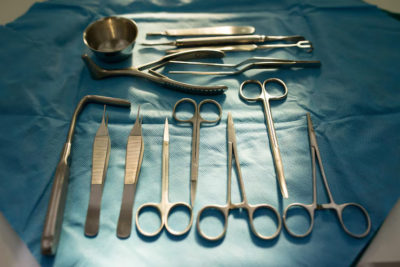It is the 14th day of August. The year is 1940. The world is embroiled in the Second World War. Gordon Cleaver, a pilot with Britain’s Royal Air Force is flying back to his base when a bullet smashes through the Perspex acrylic material of his aircraft’s cockpit side walls. Gordon is blinded in both his eyes immediately as the plastic shrapnel fly into his eyes. Amazingly, he somehow manages to turn his aircraft upside down and parachute himself to safety.
Dr. Harold Ridley performed many of the 18 surgeries that Gordon Cleaver underwent over years and it was this extensive work that gave him an idea for intraocular lens for cataract surgery. Dr. Harold realised that the splinters of embedded cockpit plastic were tolerated by Cleaver’s eye. This made him wonder if artificial lenses of a similar material could be made to restore vision to cataract patients.
How then, were cataract surgery patients treated before Cleaver’s fateful injury? Cataract surgeons would remove the cataractous natural lens during surgery. The patient would then have to wear spectacles that were so thick, they resembled the bottom of a soft drink bottle!
Since then, cataract surgery has advanced to a great extent. Today, patients undergoing cataract surgery are offered such a variety of lenses to choose from, they often get befuddled by the choice! Here is a gist of what the various types of intraocular lens (IOL) options available:
Monofocal:
This type of lens has been in use for many years now. These lenses provide best corrected vision at one focus; i.e. either near/intermediate/far distance. If a person chooses to have their IOL set for distance vision, then they would require glasses for near activities.
Multifocal:
These newer IOL reduce or completely eliminate the requirement of glasses/contact lenses to a great extent. A series of focal zones are designed into the IOL. They help the person to see both near and distant objects clearly.
Foldable:
Conventional lenses are made of a hard-plastic material. Newer lenses are made of a soft acrylic material which can be folded and inserted. The advantages with these foldable lenses are that they require a very small cut to insert the lens, hardly require stitches, provide quicker recovery and have a minimal chance of infection.
Toric:
This is a monofocal IOL which allows correction for astigmatism (better known as cylinder power). Toric lenses made from silicone provide higher quality vision than acrylic lenses with fewer distortions.
Aspheric:
Traditional IOLs have a uniformly curved front surface (called spherical). Aspheric IOLs are slightly flatter in the periphery and hence are better designed to provide contrast sensitivity.









